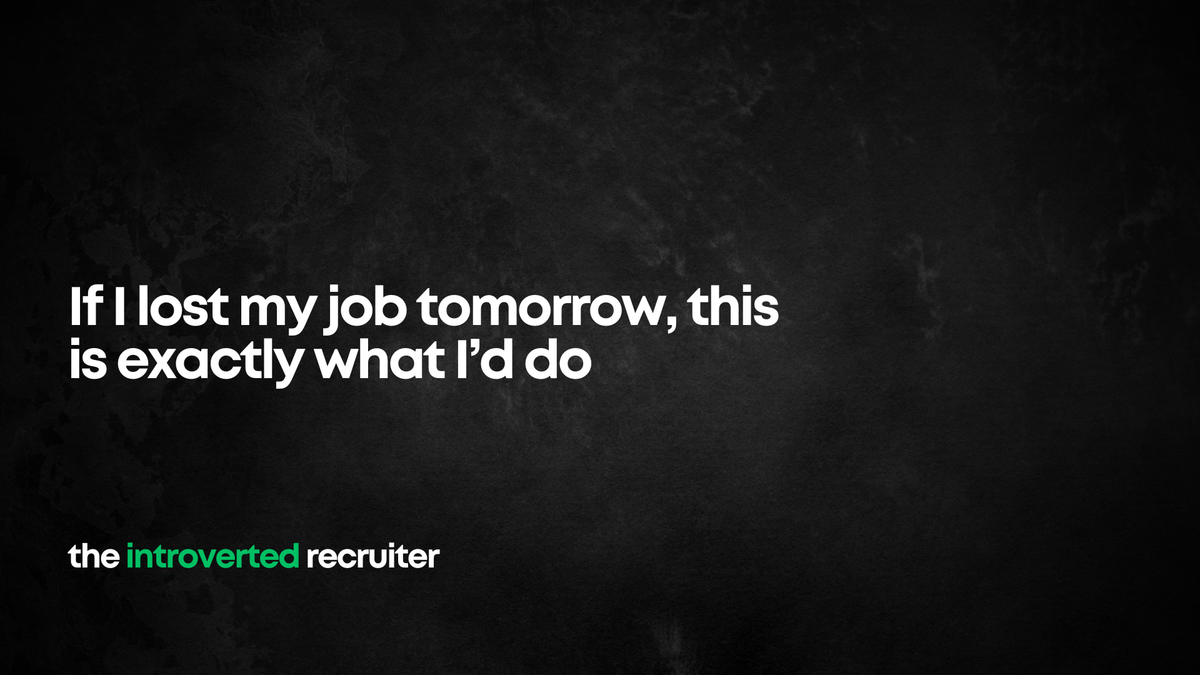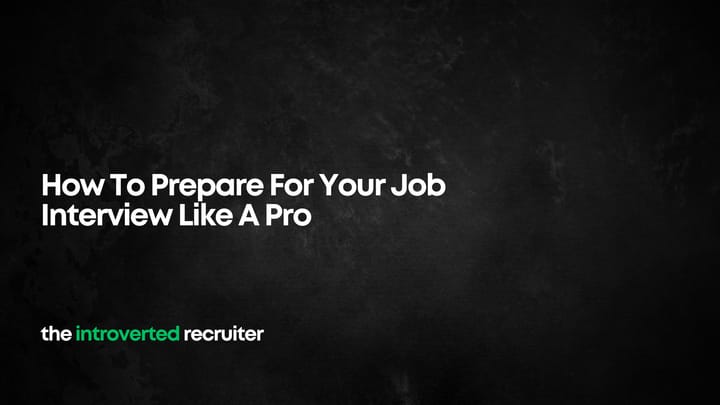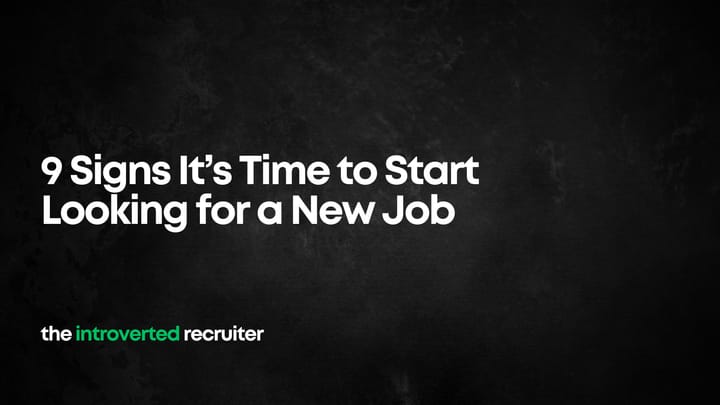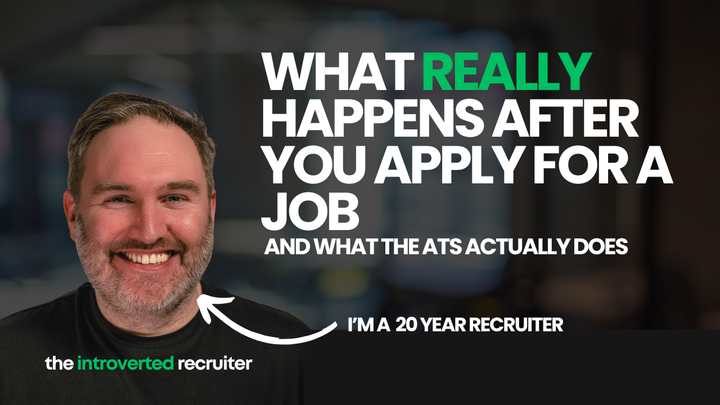If I lost my job tomorrow, this is exactly what I’d do

If I lost my job tomorrow - no notice, just boom, gone - this is exactly what I’d do to get back in the game and land a new role in as quickly as possible.
Step 1: Get My LinkedIn Profile In Order
First thing I’d do? LinkedIn. Before I even look at job boards, I’m giving my LinkedIn a proper scrub.
Your LinkedIn profile is your digital shop window. It's what recruiters and hiring managers see when they search for someone like you. And yes - they do search. So, your profile needs to show up, and it needs to look good.
Let’s break it down.
Your Headline
The headline is prime real estate. It shouldn’t say “Open to work” or “Currently seeking new opportunities.” That tells people nothing about what you actually do.
Instead, it should clearly state your job title or what you’re aiming for, ideally using keywords that recruiters actually search for.
So instead of:
“Experienced Professional | Looking for New Opportunities”
Go with:
“Digital Marketing Manager | Paid Social & SEO | eComm & DTC Specialist”
Straight to the point. Optimised for search.
Job Titles & Skills
This is where most people mess up.
Make sure your job titles match what’s commonly used in your industry - not just what your company calls it. If your official title is “People Champion” but you're basically a HR Business Partner, put HR Business Partner.
And the skills section? Make it keyword-rich. LinkedIn uses this section to match you with relevant jobs - and it’s how recruiters filter candidates when they’re searching.
If you’re a data analyst and don’t have “Power BI” or “SQL” listed in your skills, you're shooting yourself in the foot.
Featured Section
This bit’s underrated. Use it.
Add links to portfolio work, a PDF version of your CV, or posts that show off your expertise. If someone lands on your profile and this section's empty, that’s a missed opportunity.
Step 2: Switch On The “Open to Work” Banner
Yes, I’d use the banner.
There’s this weird stigma around it, like it makes you look desperate. But here’s the reality - if you're actively looking for work, let people know. You’re not desperate. You’re available. Big difference.
That green banner? It follows you around as you comment and post. It signals to recruiters that they can approach you, and it tells your network to keep you in mind. Don’t overthink it. Just turn it on.
Step 3: Make Some Noise
If you’re not posting on LinkedIn, you’re invisible. That’s just the truth.
I’d post something short and sharp - say I’m open to new roles, explain what I do, and what kind of role I’m looking for. Include a line about how people can help - either by sharing, tagging someone, or just messaging me.
I’ve seen people do this and get messages the same day. I’ve done it myself and landed a job in 3 days. Don’t underestimate the power of simply telling people you’re looking.
Step 4: Tap Into My Network (Especially Weak Ties)
Now this is where the magic happens.
Most people think networking means messaging your mates and asking if their company’s hiring. And sure, do that. But you’ll get the biggest return from your weak ties - people you worked with briefly, former colleagues, that person you chatted to once at a conference.
They’re the ones most likely to connect you to new opportunities. Why? Because they’re connected to different circles.
I’d be reaching out with a simple message:
“Hey, hope you’re well. I’m currently exploring new roles in [X], ideally within [Y industry]. If you hear of anything or know someone hiring, would love if you kept me in mind.”
Short, respectful, and you’re not asking for a job - you’re inviting help.
Step 5: Update My CV
This one’s obvious, but it still trips people up.
I’d open my CV and treat it like a marketing doc. Not a list of duties. A highlight reel of my best work.
I’d start with a short professional summary at the top - just a few lines saying who I am and what I’ve achieved. Then I’d drop in 6-8 bullet points under a “Key Skills” section to make it skimmable.
When it comes to work history, I’d start with the most recent job and for each role I’d include:
- A short overview of what the job involved
- A few bullets showing what I actually achieved (ideally with numbers)
No need to list jobs from 15 years ago unless they’re directly relevant. And I wouldn’t waste space on hobbies or GCSEs. Nobody cares.
If you need help with this, I’ve got a free CV template you can download - it’s helped loads of people get interviews.
I’ve also built and trained an AI Tool that gives you really detailed feedback on your CV, you can get it here
Step 6: Practise Interview Questions
Let’s be honest - most people wing interviews. And it shows.
If I was job hunting today, I’d sit down and prep answers to the top 10 most common interview questions. Questions like:
- “Tell me about yourself”
- “Why do you want to work here?”
- “What are your strengths and weaknesses?”
- “Describe a difficult situation and how you handled it”
I’d use the STAR method: Situation, Task, Action, Result. I’d practise aloud. I might even record myself.
And here’s the thing most people forget: The interview goes both ways. You need to figure out if the company - and more importantly, the manager - is right for you.
Step 7: Research the Company and the Hiring Manager
Before every interview, I’d dig into two things:
1. The Company:
Not just when they were founded or how many employees they’ve got. I’d want to understand what they actually do, who their customers are, what challenges they’re facing, and how this role fits into the bigger picture.
2. The Interviewer (i.e. Your Potential Boss):
This is the big one.
Have a snoop on LinkedIn. How long have they been in the role? What’s their career path? Do their team members leave glowing recommendations? Do they share useful content or just reshare company posts?
That gives you a solid idea of whether they’re a supportive leader or a bit of a micromanager.
Then I’d prepare some proper questions for them. Not “What’s the culture like?” (everyone says it’s great). Instead:
- “What does success look like in the first 6 months?”
- “What’s the biggest challenge facing the team right now?”
- “How would you describe your management style?”
These are the kind of questions that make you stand out as someone who’s thinking long-term.
Step 8: Be Proactive - Speculative Outreach
Finally, if there are companies I’d love to work for - even if they don’t have a job posted - I’d reach out anyway.
I’d find the hiring manager or someone in the department I want to join, and send them a message or email. Something like:
“Hi I’ve been following your company for a while and love the work you’re doing around x, y, z. I’ve got x years experience in a,b,c and I’m currently exploring new opportunities. If you’re ever hiring for someone with my skill set, I’d love to connect or send over my CV.”
These messages work. I’ve seen people land interviews - and even jobs - off the back of one well-written message.
You might not get a reply every time, but if you send ten and one of them leads somewhere, it’s worth it.
Look, job searching in 2025 is no joke. It’s competitive. It’s exhausting. But it’s not impossible.
If I was looking for a job today, this is the exact playbook I’d follow:
- Optimise LinkedIn
- Use the Open to Work banner
- Make some noise online
- Leverage my network (especially weak ties)
- Update my CV with actual achievements
- Practise the hell out of interview questions
- Research companies - and hiring managers
- Be proactive and reach out speculatively
Don’t just scroll job boards all day and hope for the best. Be visible. Be intentional. And don’t forget to ask for help - because you’re not in this alone.
P.S. — The No-Nonsense Job Search System
A few months ago I quietly launched The No-Nonsense Job Search System — a step-by-step course packed with the exact strategies, templates, and tools you need to land interviews, stand out in the process, and negotiate better pay.
Since then, loads of people have gone through it and I’ve had some genuinely great feedback.
I’ve kept it at £25 for the first few months — but next week, it’ll be going up to its full price of £99.
I’ll be updating the price to £99 on Monday 5th May—so if you’ve been thinking about it, now’s a good time.
So if you were thinking of getting it, now is the time!
Get it here
Follow Me
Find me on LinkedIn , TikTok , YouTube or Instagram where I share lot’s of practical no nonsense advice.



